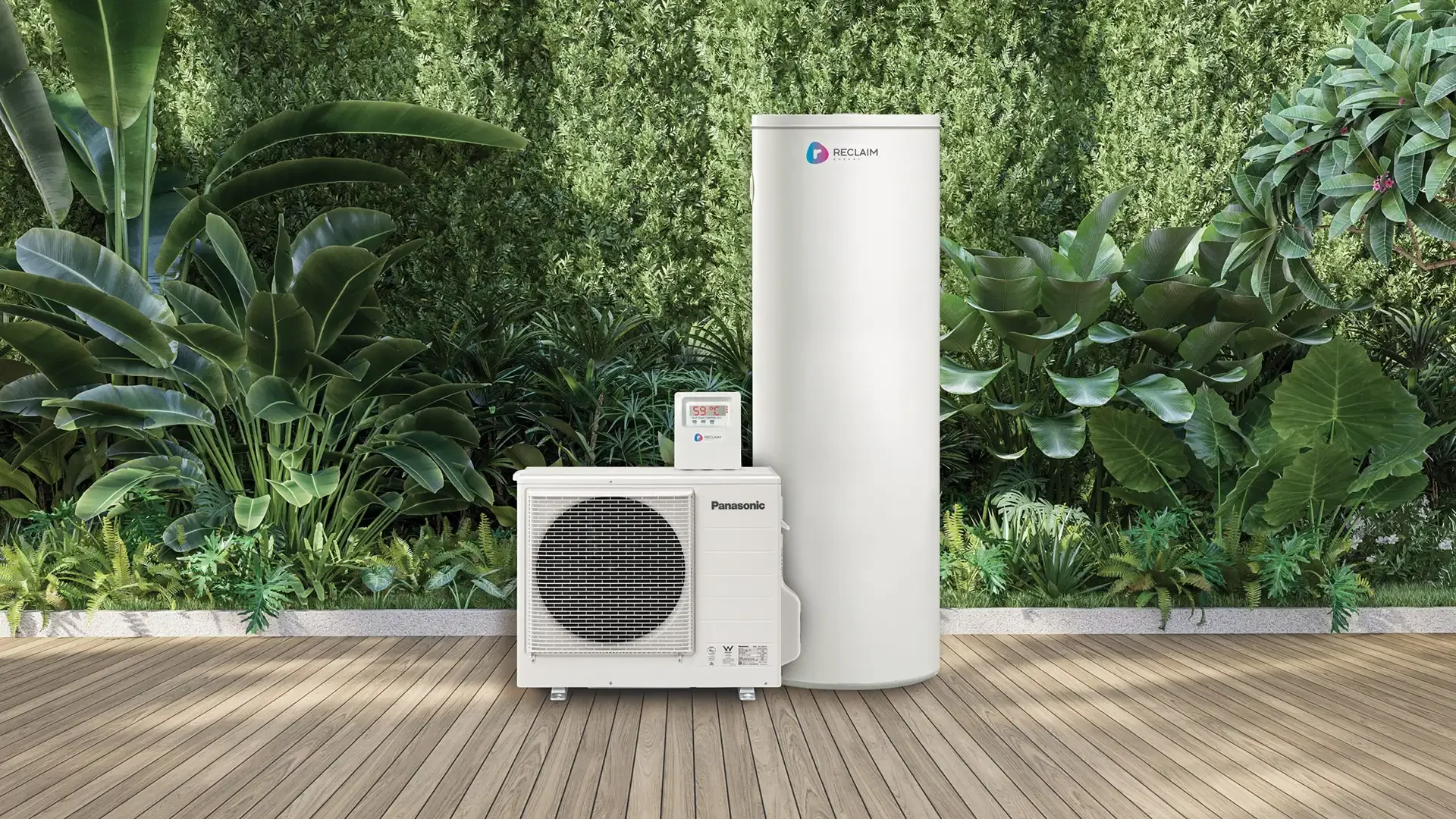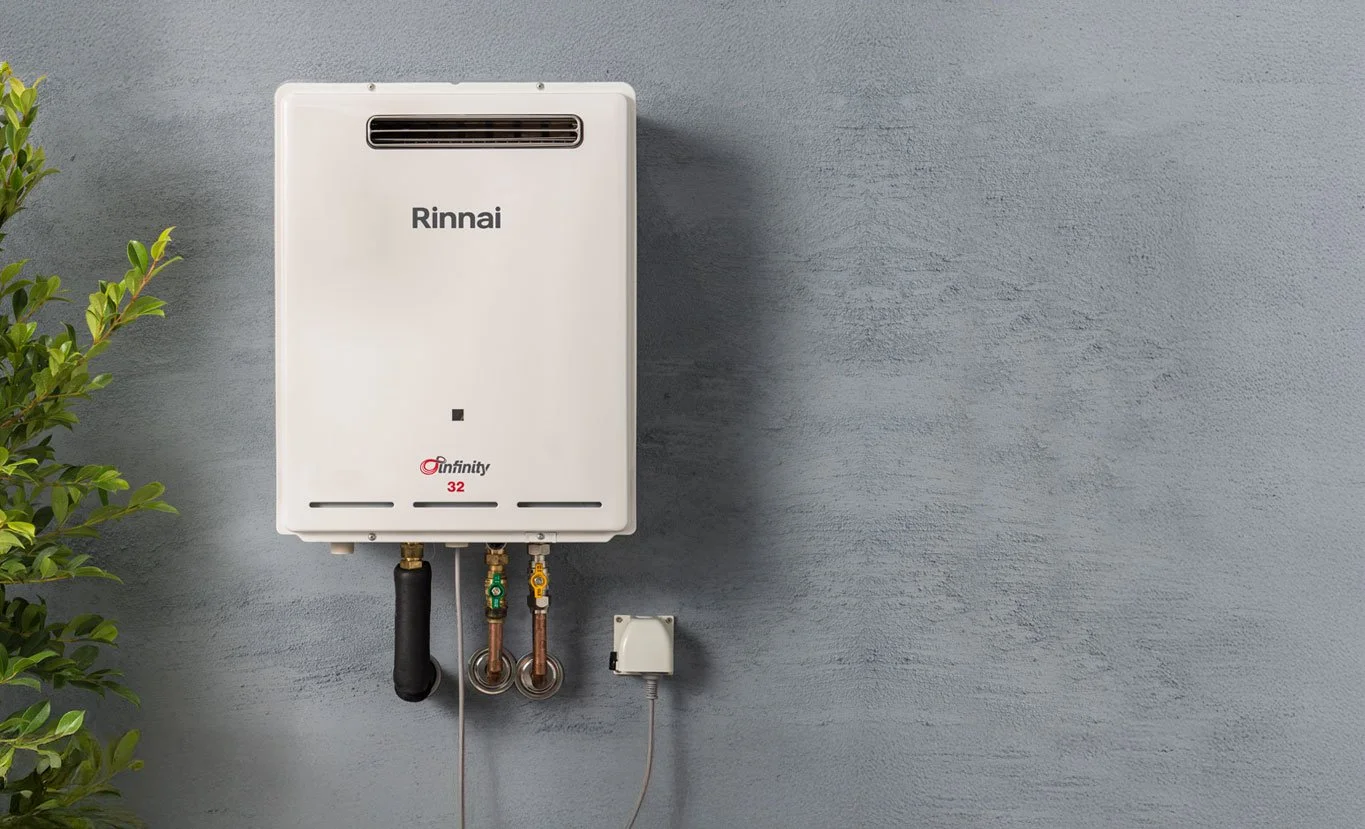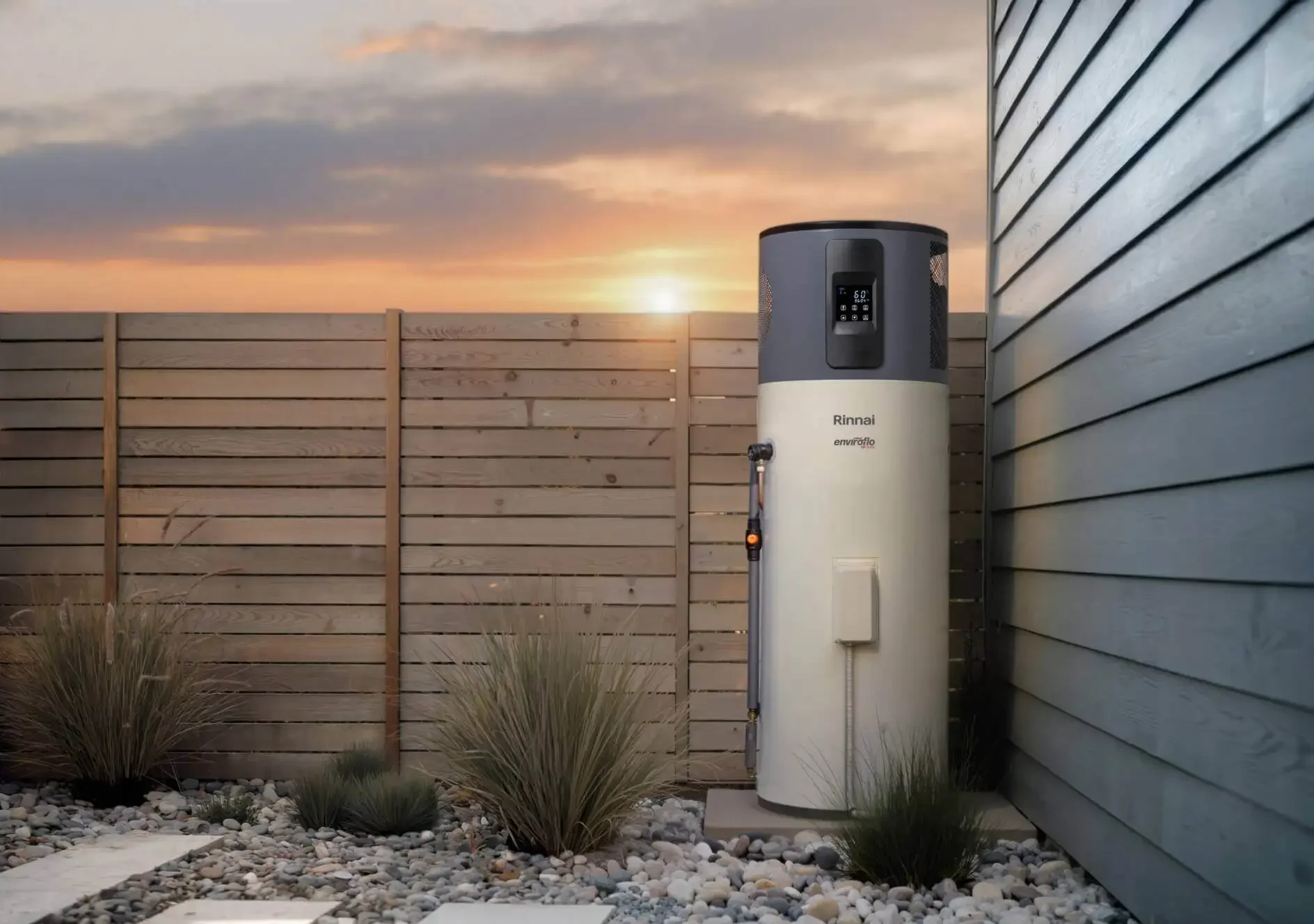Choosing the Right Hot Water System for Tiny Homes Off-Grid in Australia
When you live in a tiny home off-grid, every square metre and every watt of power matters. Space is limited, budgets are tighter, and power supply depends on your solar and battery setup. Hot water is often one of the biggest energy demands in any small home — so getting the right system can dramatically improve your energy independence, comfort, and long-term costs.
This guide explores the four main types of hot water systems used in off-grid setups — heat pumps, gas systems, solar thermal systems, and traditional electric storage. We’ll compare how each performs in a tiny-home context, considering power draw, installation space, upfront costs, and long-term efficiency.
Efficiency Rankings for Tiny Homes
Heat Pump Hot Water System
Gas Hot Water System (LPG Continuous Flow)
Solar Thermal Hot Water System (with Booster)
Traditional Electric Storage Hot Water System
A Heat Pump hot water system (Image: https://reclaimenergy.com.au/)
1. Heat Pump Hot Water System
Example: Reclaim Energy 160 L Compact Heat Pump
How It Works
A heat pump works like a reverse fridge: it extracts warmth from the surrounding air and transfers that heat into water stored in an insulated tank. Even on cool days, the system efficiently concentrates ambient heat through a compressor and heat-exchange coil to produce hot water.
Why It’s Great for Tiny Homes
Energy Efficiency: Delivers 3–4 kWh of heat for every 1 kWh of electricity used (COP 3–4).
Solar Friendly: Can be set on a daytime timer, drawing power directly from solar panels when the sun’s up — sparing your batteries overnight.
Low Operating Cost: Uses roughly 0.9–1.5 kWh per day, compared to 4–6 kWh for a traditional electric system.
Compact Options: Newer models like the Reclaim Energy Compact have smaller tanks (160–200 L) ideal for one- or two-person homes.
Installation Considerations
Heat pumps are quiet, compact, and can often be installed beside or under a deck. They do require adequate airflow and mild outdoor temperatures (above –5 °C). For very cold regions, a hybrid model with an electric or gas booster may be advisable.
Battery & Budget
Running the unit during daylight means minimal battery drain, and long-term electricity costs are far lower than traditional systems. Initial investment is typically $2,500–$3,500 installed, but federal and state rebates can offset much of that cost.
✅ Verdict: The best all-round solution for off-grid tiny homes. Highly efficient, solar-friendly, and compact enough to fit tight spaces.
A Gas Continuous Flow Hot Water Heater (Image: https://www.rinnai.com.au/)
2. Gas Hot Water System (LPG Continuous Flow)
Example: Rinnai Infinity 20 or Bosch Highflow 4000 Series
How It Works
A gas continuous-flow system heats water instantly as it passes through the unit. When you turn on a tap, cold water flows through a heat exchanger fired by an LPG burner. There’s no storage tank — and therefore no standby heat loss.
Why It’s Great for Tiny Homes
Compact Design: Wall-mounted units fit easily on the exterior wall of a tiny home.
No Electricity Draw: Perfect for solar setups with small battery banks.
Instant Hot Water: You’ll never “run out” of hot water — it heats on demand.
Low Maintenance: No tank corrosion or sacrificial anode replacements.
Energy Consumption & Cost
Gas systems use LPG cylinders (usually 45 kg bottles). A single bottle can last several months for a small household, depending on shower length and frequency. Usage averages around 0.5–1.0 kg LPG per day.
While LPG prices fluctuate, ongoing costs remain manageable for moderate usage. Systems like the Rinnai Infinity 20 are highly efficient (6-star rating) and use no electrical energy, protecting your solar battery reserve entirely.
Battery & Budget
Because they use zero electricity, gas systems are ideal for homes with limited solar capacity or modest batteries. Upfront cost is modest — $1,500–$2,500 installed — though ongoing LPG supply costs should be factored into your budget.
✅ Verdict: A smart choice for off-grid tiny homes with smaller solar arrays or limited battery capacity. Reliable, efficient, and power-free — perfect backup or full-time option.
A solar hot water system (Image: https://cheapahotwater.com.au/)
3. Solar Thermal Hot Water System (with Booster)
Example: Rinnai Sunmaster 330 or Apricus Evacuated Tube System
How It Works
Solar thermal systems use roof-mounted collectors to absorb sunlight and transfer heat into a storage tank. On sunny days, this system can supply almost all your hot water needs. When sunshine is limited, a booster — either electric or gas — keeps water at temperature.
Pros and Cons for Tiny Homes
✅ Pros:
Uses free solar heat for most of the year.
Can reduce hot-water energy use by up to 80 percent.
Long lifespan, durable components.
❌ Cons:
Roof-Space Limitation: Tiny homes often have small or fully occupied roof space. Solar collectors compete with solar PV panels — usually your higher priority.
Weight and Installation: Roof-mounted tanks (thermosiphon models) can be too heavy for tiny-home roofs. Split systems with ground tanks require additional plumbing and pumps.
Booster Use: Electric boosters draw heavy current at night; gas boosters add cost and complexity.
Energy & Battery Considerations
If paired with a gas booster, a solar thermal system can run efficiently off-grid. However, electric boosters (2–4 kWh per day) are not battery-friendly. For most tiny homes, prioritising roof PV panels for electricity production makes more sense than dedicating that area to thermal collectors.
Budget
Expect to pay $3,000–$4,500 installed. While the long-term energy savings are strong, upfront cost and installation complexity are higher than other systems.
⚠️ Verdict: Great technology, but roof space is the deal-breaker for most tiny homes. Choose only if you have ample roof area and a gas booster option.
A traditional hot water storage tank system (Image: https://www.rinnai.com.au/)
4. Traditional Electric Storage Hot Water System
Example: Rheem 125 L or Dux Proflo 125 L
How It Works
This system uses an electric element inside an insulated tank to heat and store water. The thermostat cycles the element on and off to maintain temperature — typically 60–70 °C.
Why It’s a Poor Fit for Tiny Homes
Energy Hungry: Consumes 4–6 kWh daily, which can easily exceed your solar capacity.
Battery Strain: Often heats at night, draining stored power or triggering generator use.
Bulky: Even the smallest tanks (80–125 L) take up precious space inside or under your home.
Budget
Upfront cost is low ($1,200–$1,800 installed), but long-term costs are high because of frequent generator runs and increased battery cycling.
❌ Verdict: The least efficient and least practical system for tiny off-grid homes unless paired with a large solar-battery-generator setup.
Key Takeaways for Tiny-Home Living
1. Think Energy Timing, Not Just Efficiency
The most efficient system isn’t always the easiest on your batteries. Systems that run during daylight hours (like heat pumps) use solar directly, avoiding costly overnight power draw.
2. Roof Space Is Premium Real Estate
Your roof must host solar panels first. Hot-water collectors take valuable space and add weight, so in most cases, PV + heat pump or gas is a smarter combination.
3. Match System Size to Lifestyle
Tiny homes rarely need more than 150–200 L of hot water storage. Oversized systems waste power and space. Choose right-sized tanks and low-flow showerheads to stretch efficiency even further.
4. Backup Strategies
If your solar array is small, consider a gas backup or wetback connection on a wood heater. A hybrid approach keeps you covered through cloudy weather or high-use days.
5. Budget for the Long Term
Although traditional electric systems cost less upfront, they’re more expensive over time due to generator fuel and battery wear. Investing in a heat pump or gas system saves thousands across the years.
Ideal Setup for Most Tiny Homes
For most Australians living off-grid in a tiny home, the best combination looks like this:
☀️ Primary: Compact heat pump system running on daytime solar
🔥 Backup: LPG instant hot water system or wood wetback heater
This setup delivers:
Low daily energy use (1–2 kWh total)
Minimal battery cycling
Flexibility across seasons
Easy installation with minimal roof space
Final Thoughts
Off-grid living in a tiny home demands careful energy planning — and your hot water system is one of the biggest factors in your daily comfort and sustainability.
A heat pump offers the best balance of efficiency, solar compatibility, and running cost.
A gas system provides reliable, power-free backup.
Solar thermal systems can be effective but often aren’t worth the roof space.
And traditional electric storage systems are simply too power-hungry for most tiny homes.
When your roof is small, your batteries are precious, and your budget matters, the goal is clear:
Get hot water the smart way — with the smallest energy footprint possible.




